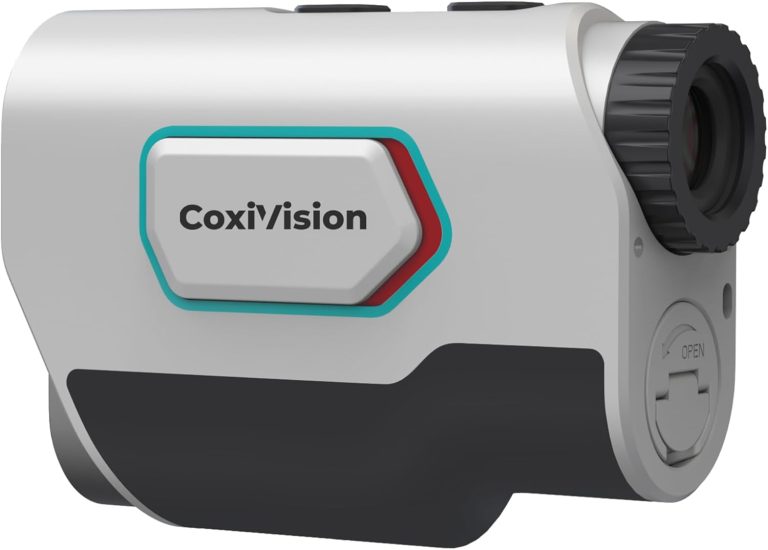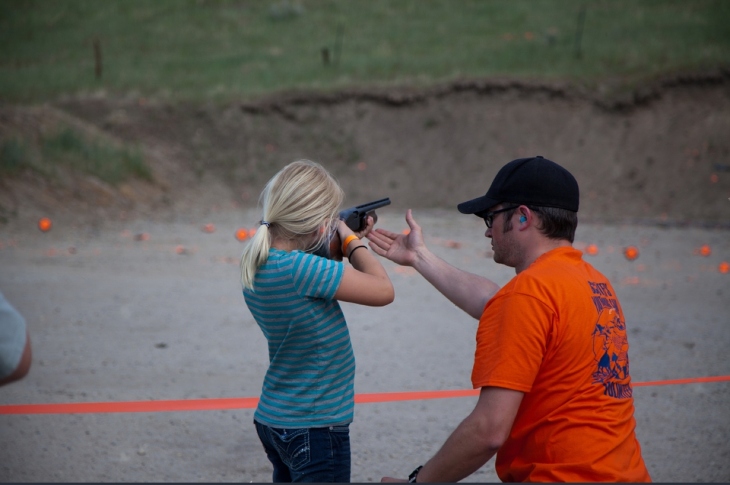Labrador Retrievers are one of the most popular gun dog breeds in the world, known for their friendly and loyal nature. However, there are two distinct types of Labradors – English Labs and American Labs. Enjoyhuntinglife delve into the differences between these two types, including their physical characteristics, temperament, purpose and use, health, training and exercise needs, grooming requirements, and frequently asked questions.
Labrador Retrievers: A Versatile Breed
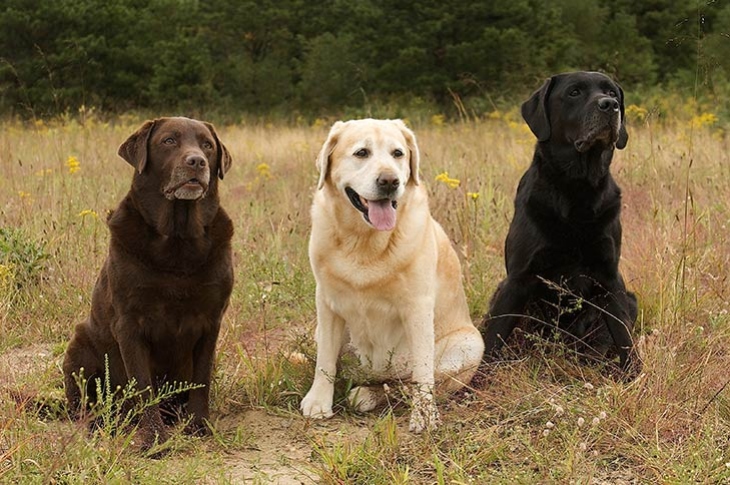
Labrador Retrievers, commonly referred to as Labs, are a breed of gun dog originating from Newfoundland, Canada. They were initially bred to assist fishermen in retrieving nets and fish. Over time, Labs gained popularity for their intelligence, versatility, and friendly demeanor, making them excellent family pets and working dogs. Today, they are widely recognized for their ability to excel in various roles, including search and rescue, therapy and service work, detection, and as canine companions.
Working Dogs with a Rich History
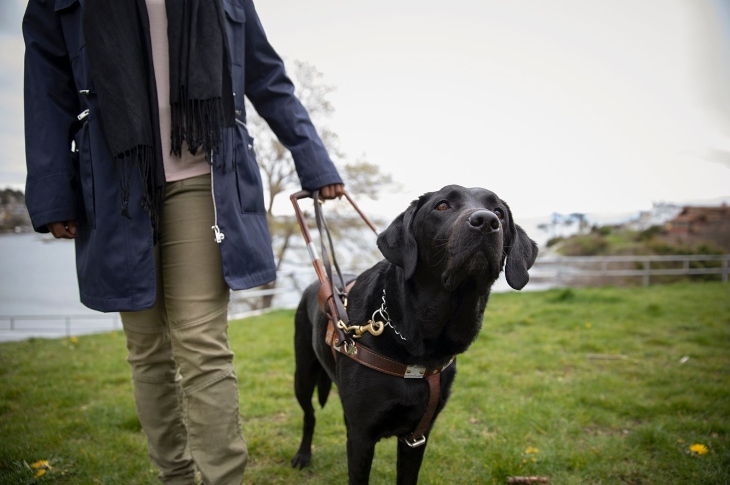
Labradors have a rich history rooted in their working abilities. Their origins can be traced back to Newfoundland, where they were bred to help fishermen with their daily tasks. They would assist in retrieving fish that escaped from fishing nets and were also skilled at retrieving lines and ropes. Their ability to swim and navigate through rough waters made them invaluable assets to the fishermen.
As time went on, Labradors caught the attention of English nobles who visited Newfoundland. The English recognized the breed’s potential and began bringing Labradors back to England, where they were further developed and refined to meet their specific needs. From there, the breed started gaining popularity in various roles.
The Intelligence of Labs
Labradors are known for their exceptional intelligence. They are quick learners and highly adaptable, making them suitable for a wide range of tasks. Their intelligence allows them to excel in training programs for search and rescue operations, therapy and service work, and detection tasks.
Labradors have an innate ability to understand and follow instructions, making them highly trainable. This, combined with their natural drive to please their owners, makes them an ideal choice for working roles that require obedience, focus, and problem-solving skills.
A Friendly and Gentle Nature
One of the defining characteristics of Labradors is their friendly and gentle nature. They are known for being affectionate, loyal, and good-natured. This makes them great family pets and beloved companions.
Labradors have a natural affinity for children and are known to be patient and tolerant. They are often referred to as “gentle giants” due to their size and gentle temperament. Their friendly demeanor also makes them great therapy dogs, as they are able to provide comfort and emotional support to those in need.
Labradors in Various Roles
Labradors’ versatility and adaptability make them suitable for a wide range of roles. They are frequently utilized as search and rescue dogs, using their excellent sense of smell and tracking skills to locate missing people in different terrains and conditions.
Labradors are also valued for their abilities in therapy and service work. They can be trained to assist individuals with disabilities, providing physical support and emotional comfort. Additionally, Labradors excel in detection tasks, such as sniffing out narcotics, explosives, and other contraband.
The Ideal Canine Companions
Labradors’ friendly and sociable nature makes them ideal canine companions. They thrive in human company and are eager to please their owners. Labradors are known to form strong bonds with their families, making them loyal and devoted pets.
Whether as a loyal family pet, a hardworking service dog, or a trusted search and rescue partner, Labradors continue to showcase their exceptional capabilities in various roles. Their intelligence, versatility, and friendly demeanor make them a beloved breed worldwide.
Physical Characteristics

English Labs, also known as Bench-bred or Show Labs, have a stockier build compared to their American counterparts. They have blockier heads, shorter legs, thicker tails, and broader faces. On the other hand, American Labs, also referred to as Field-bred or Working Labs, are taller and lankier with narrower heads, longer legs, thinner tails, and a sleeker appearance. These physical differences are a result of breeding lines and the intended purpose of each type.
When it comes to physical characteristics, English Labs have distinct features that set them apart from American Labs.
Build
English Labs have a stockier and heavier build compared to American Labs. They have a broader chest, a wide and deep body, and a robust frame. This sturdy physique makes them well-suited for activities that require strength and endurance.
American Labs, on the other hand, have a leaner and more athletic build. They are taller and have a longer body with a narrower chest. This allows them to move more swiftly and efficiently, making them ideal for activities that require speed and agility.
Head Shape
The head shape of English Labs is blockier and wider compared to American Labs. They have a prominent, square-shaped skull with a broad muzzle. This gives them a distinct and noble appearance.
American Labs, on the other hand, have a narrower head with a more tapered muzzle. Their skull is rounded, giving them a more streamlined and sleek look.
Leg Length
English Labs have shorter legs compared to American Labs. This contributes to their stockier appearance. Despite their shorter legs, they are still well-balanced and able to move with agility.
American Labs have longer legs, which add to their overall taller stature. Their longer limbs enable them to cover more ground and excel in activities such as hunting and retrieving.
Tail
The tail of an English Lab is thicker and shorter compared to an American Lab. English Labs have a strong, thick tail that is carried with a slight upward curve.
American Labs have a thinner tail that is longer in proportion. Their tail is straight or slightly curved and helps them maintain their balance while performing tasks.
Facial Features
English Labs have broader faces and more pronounced cheeks compared to American Labs. Their eyes are usually round and expressive, giving them an intelligent and friendly look.
American Labs have narrower faces with more refined features. Their eyes are typically almond-shaped and convey a sense of intensity and focus.
Temperament and Behavior

English Labs and American Labs, although belonging to the same Labrador Retriever breed, exhibit distinct differences in temperament and behavior. These variations can be attributed to their breeding goals and intended use.
English Labs: Calm and Laid-Back Companions
English Labs are known for their calm and laid-back nature, making them incredibly suitable for families and individuals seeking a relaxed companion. They have a friendly and social disposition, often eager to please their owners.
Due to their calm temperament, English Labs are often successful as therapy and service dogs. Their gentle and patient nature enables them to work well in various therapy settings, providing comfort and support to those in need. They can also be trained to perform a wide range of service tasks, assisting individuals with disabilities.
When it comes to energy levels, English Labs tend to be moderate. They are content with regular exercise and daily walks, but they are not excessively hyperactive. This characteristic makes them more well-suited for households that prefer a less intense and high-energy dog.
American Labs: Energetic and Instinctual
In contrast to English Labs, American Labs are generally more energetic and possess keen coon hunting instincts. This is a result of selective breeding for more active and driven working dogs.
With their high energy levels, American Labs require more exercise and mental stimulation to prevent boredom and destructive behavior. Engaging in activities such as jogging, playing fetch, or participating in dog sports can help meet their physical and mental needs. Without proper outlets for their energy, they may become restless and exhibit behavioral problems.
Due to their hunting instincts, American Labs thrive in activities that stimulate their natural abilities. They excel in activities like agility trials, scent work, and retrieval games. Providing them with opportunities to use their hunting instincts in a controlled and positive manner can help channel their energy constructively.
Understanding the Differences
The dissimilarities in temperament and behavior between English Labs and American Labs underscore the importance of considering your lifestyle and preferences when selecting a Labrador Retriever.
If you desire a calm and more laid-back companion, an English Lab may be the ideal choice. They are well-suited for families, individuals, and therapy or service work. Their moderate energy levels make them easier to manage in a home environment.
On the other hand, if you are an active individual who enjoys outdoor activities and wants a dog with higher energy levels, an American Lab might be more suitable. They require exercise and mental stimulation to keep them happy and fulfilled.
Note: It is crucial to remember that individual variations exist within each type of Lab. While these generalizations regarding temperament are common, they do not apply to every single dog.
When choosing between an English Lab and an American Lab, consulting with reputable breeders or shelters and spending time with each type of Lab can help you make an informed decision. Regardless of whether you choose an English or American Lab, both types can make loving and loyal companions with proper care and training.
Purpose and Use

English Labs and American Labs may share a common ancestry, but they have distinct purposes and uses. Understanding these differences can help you choose the right Labrador Retriever for your specific needs.
English Labs: Ideal for Conformation Shows and Therapy Work
English Labs, also known as show-type Labs, are primarily bred for conformation shows. These shows evaluate a dog’s physical appearance and adherence to breed standards. English Labs have distinct characteristics that set them apart.
One notable quality of English Labs is their calm and gentle nature. They are well-suited for therapy and service work, where their compassionate and patient demeanor shines. Their friendly and affectionate personality makes them excellent companions for individuals with disabilities or those in need of emotional support.
English Labs have a stockier build and a thicker, otter-like tail. They typically have a fuller face, shorter legs, and a broader chest compared to their American counterparts. These physical traits make them look more blocky and compact.
Although English Labs excel in the show ring and as therapy dogs, they can still participate in various dog sports and activities. Their intelligence and trainability make them suitable for obedience trials, tracking, and even agility competitions. However, they may not have the same level of energy and athleticism as American Labs.
American Labs: Perfect for Field Work and Hunting
American Labs, also known as field-type Labs, were originally bred for their exceptional hunting abilities. These Labs are specifically selected and trained for field work, including retrieving game birds, upland game, and waterfowl.
One prominent characteristic of American Labs is their high energy levels and strong drive. These dogs are bursting with enthusiasm and thrive in activities that challenge them physically and mentally.
Due to their athletic build and working drive, American Labs are excellent companions for hunters and outdoor enthusiasts. They have the stamina and endurance to keep up with long days in the field and challenging terrains.
Choosing the Right Labrador Retriever for You

When deciding between an English Lab and an American Lab, it’s essential to consider your lifestyle, preferences, and intended purpose for the dog.
If you’re primarily interested in conformation shows or therapy work, an English Lab may be the ideal choice. Their calm and gentle temperament, along with their pleasing appearance, make them wonderful companion dogs for these specific roles.
On the other hand, if you’re an active individual who enjoys outdoor activities such as hunting or participating in dog sports, an American Lab might be a better fit. Their boundless energy, drive, and athleticism will ensure an exciting and fulfilling partnership.
Regardless of the specific type, both English Labs and American Labs are Labrador Retrievers at heart. They share a common devotion to their families, intelligence, and loyalty.
Keep in mind that individual temperament and personality can vary within each type. It’s essential to thoroughly research and interact with potential breeders or rescue organizations to find a Labrador Retriever that matches your preferences and requirements.
Ultimately, whether you choose an English Lab or an American Lab, you’ll be welcoming a loving and devoted companion into your life. Both types offer unique qualities and abilities that make them exceptional dogs in their respective fields of purpose.
Labrador Retriever Health and Longevity
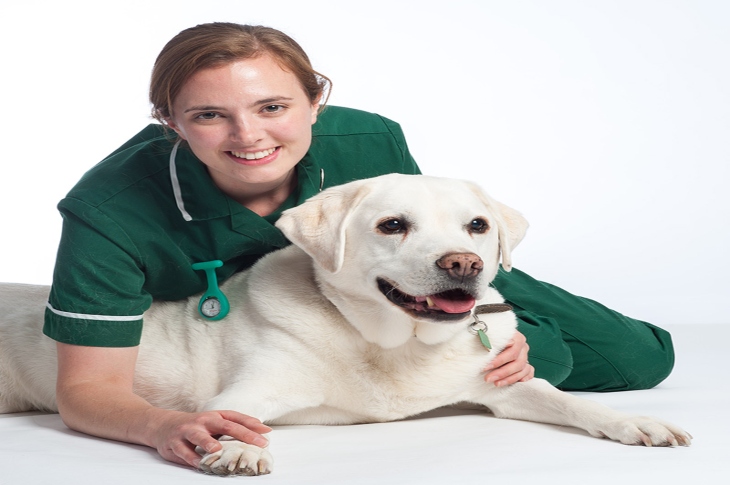
Labrador Retrievers are known for their friendly, outgoing demeanor and their love for activities like swimming and retrieving. They are generally healthy dogs, but like all breeds, they are prone to certain health issues that potential owners should be aware of.
Common Health Issues in Labrador Retrievers
- Hip Dysplasia: This is a hereditary condition where the thighbone doesn’t fit properly into the hip joint. It can lead to joint instability, pain, and arthritis. Regular exercise on soft surfaces and a balanced diet can help maintain muscle tone and support joint health.
- Elbow Dysplasia: Another hereditary condition, elbow dysplasia affects the development of the elbow joint. It can cause pain and lameness, and may require surgical intervention. Avoiding excessive jumping or strenuous exercise during the growing stage of a Lab puppy can help prevent elbow dysplasia.
- Eye Conditions: Labrador Retrievers are susceptible to various eye problems, including cataracts, progressive retinal atrophy (PRA), and retinal dysplasia. Regular eye exams by a veterinary ophthalmologist can help detect and manage these conditions.
- Heart Diseases: Labrador Retrievers may be prone to certain heart conditions such as dilated cardiomyopathy and mitral valve disease. Regular veterinary check-ups, a balanced diet, and appropriate exercise can help maintain a healthy heart.
Ensuring the Well-being of Your Labrador Retriever
While Labradors may be predisposed to certain health conditions, responsible breeding practices, proper nutrition, regular exercise, and routine veterinary care play a crucial role in maintaining their overall health and longevity.
Responsible Breeding: Choosing a reputable breeder who conducts health screenings on their breeding dogs helps reduce the risk of inherited health problems. Ask breeders for health clearances for both parents, including hip and elbow evaluations, eye exams, and cardiac evaluations.
Nutrition: Providing a balanced and nutritious diet is essential for the well-being of Labradors. High-quality dog food that meets their specific nutritional needs, including appropriate amounts of protein, fats, and carbohydrates, can help support their overall health and reduce the risk of certain health conditions.
Regular Exercise: Labrador Retrievers are active dogs that require regular exercise to stay physically and mentally healthy. Aim for at least an hour of exercise each day, which can include activities like walks, swimming, playing fetch, or participating in dog sports. Regular exercise helps maintain a healthy weight, supports joint health, and prevents obesity-related issues.
Routine Veterinary Care: Regular check-ups with a veterinarian are essential to monitor your Lab’s overall health. Vaccinations, parasite prevention, dental care, and early detection of any health issues are important aspects of routine veterinary care.
Training and Exercise Needs

When it comes to training and exercise, English Labs require moderate exercise and training focused on socialization and basic commands. They are generally eager to please and respond well to positive reinforcement methods.
English Labs, also known as Labrador Retrievers, are intelligent and versatile dogs. They have a natural desire to please their owners, making them highly trainable. However, they do have specific needs when it comes to physical exercise and mental stimulation.
Exercise Requirements of English Labs
English Labs are an active breed, but they do not have the same energy levels as their American counterparts. They require moderate exercise to keep them happy and healthy. A daily walk or jog, along with some playtime in a fenced yard, is usually sufficient to meet their exercise needs.
Socialization is also crucial for English Labs. They are friendly and sociable dogs, but proper socialization from an early age will ensure they are well-behaved and comfortable in various situations. Introducing them to different people, animals, and environments will help prevent shyness or aggression as they grow older.
Training Methods for English Labs
English Labs respond well to positive reinforcement training methods. They thrive on praise, rewards, and treats, making them eager to learn and please their owners. When training your English Lab, it’s essential to use consistent and patient methods.
Basic obedience commands, such as sit, stay, come, and heel, should be taught early on. These commands will help establish your role as the leader and ensure a well-behaved and obedient dog. Crate training and house training are also essential aspects of English Lab training.
English Labs have a strong retrieval instinct, so incorporating games like fetch can be a fun way to provide mental and physical exercise. Puzzle toys and interactive games that challenge their problem-solving abilities are also recommended to keep their minds stimulated.
American Labs: Higher Exercise Needs
American Labs, also known as American Labrador Retrievers, have higher exercise needs compared to English Labs. This is because they have more energy and stronger hunting instincts.
American Labs are often bred for activities like fieldwork and hunting. They excel at retrieving games, working in the water, and participating in competitive events like field trials. To meet their exercise requirements, they need more than just a daily walk or jog.
Intense Physical Activities for American Labs
American Labs thrive in environments where they can engage in intense physical activities. This can include activities like swimming, hiking, running alongside a bicycle, or participating in agility training. These high-energy activities help keep them mentally and physically stimulated.
Providing opportunities for your American Lab to roam and explore safely in a secure, fenced area is also beneficial. This allows them to release their pent-up energy and satisfy their natural instincts.
Specialized Training for American Labs
American Labs often require specialized training due to their specific roles as working dogs. If you plan to use your American Lab for hunting or fieldwork, professional training and guidance may be necessary.
Training programs for American Labs can include obedience training, gun dog training, and specific exercises to enhance their retrieving skills. These programs help harness their natural abilities and instincts, ensuring they are well-trained and focused in their respective roles.
Grooming for English Labs and American Labs
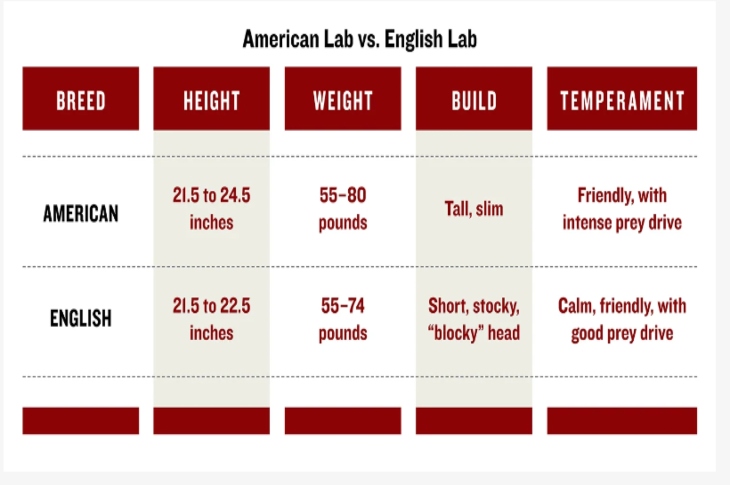
English Labs and American Labs are both popular breeds known for their friendly nature and intelligence. Both of these Labrador Retriever variations have short, dense, and water-resistant coats, which require regular grooming to keep them healthy and attractive.
One of the important aspects of grooming for Labs is managing their shedding. Labs typically shed moderately throughout the year, with heavier shedding during the shedding seasons. To minimize shedding and keep their coats healthy, regular brushing is recommended. By using a good quality brush specifically designed for Labs, you can remove loose hairs and prevent them from spreading all over the house.
When brushing your Lab, start from the head and move towards the tail, following the direction of hair growth. Be gentle and be sure to cover all areas, including the underbelly and legs. Regular brushing not only helps in reducing shedding, but it also promotes blood circulation, removes dirt and debris, and keeps the coat shiny and smooth. Aim to brush your Lab at least once or twice a week.
In addition to regular brushing, Labs should be bathed as needed. The frequency of bathing depends on various factors, such as the Lab’s activity level, coat condition, and exposure to dirt. Generally, Labs should be bathed every 2-3 months, or whenever they become visibly dirty or smelly. Use a mild, dog-specific shampoo and thoroughly rinse off all the shampoo to avoid any skin irritation.
During the bathing process, take care not to get water into your Lab’s ears as it can lead to ear infections. After bathing, make sure to dry your Lab completely, especially the ears. You can use a clean towel or a blow dryer on a low heat setting to remove excess moisture.
Grooming also involves taking care of your Lab’s ears, teeth, and nails. Labs are prone to ear infections, so it’s important to regularly check their ears for signs of redness, swelling, or foul odor. Use a dog-specific ear cleaner and a soft cloth or cotton ball to gently clean the ears. Avoid using cotton swabs, as they can push wax further into the ear canal.
Proper dental care is essential for Labs to maintain good oral hygiene. Regularly brushing your Lab’s teeth using a dog-specific toothbrush and toothpaste helps prevent tartar buildup, gum disease, and bad breath. Introduce toothbrushing gradually and make it a positive experience for your Lab by rewarding them with praise or treats.
Trimming your Lab’s nails is important to prevent them from becoming too long, which can lead to discomfort and difficulties in walking. Use a dog nail clipper or grinder and carefully trim the tips of the nails. Be cautious not to cut into the quick, which is the sensitive part of the nail that contains blood vessels and nerves. If you’re unsure about nail trimming, consult a professional groomer or veterinarian
FAQ’s
[sc_fs_multi_faq headline-0=”h3″ question-0=”Which Lab type is better for families?” answer-0=”English Labs, known for their calmness, are great for families with kids or elderly members, requiring less exercise. American Labs, with high energy, suit active families and need more exercise and stimulation. Choose based on your family’s activity level and time for training.” image-0=”” headline-1=”h3″ question-1=”Can an American Lab participate in dog shows?” answer-1=”American Labs can join dog shows, particularly in performance events like agility and obedience. While they differ in conformation from English Labs, their diverse traits shine in skill-based competitions. Owning an American Lab? Consider performance events to showcase their talents and strengthen your bond. ” image-1=”” headline-2=”h3″ question-2=”Are there significant health differences between the two?” answer-2=”Both English and American Labs are Labradors and face similar health risks. English Labs, bred for shows, might have higher chances of dysplasia and obesity, while American Labs, bred for work, could have fewer inherited disorders but still face typical Labrador issues. Regardless of type, selecting a responsible breeder and maintaining regular vet visits, diet, exercise, and grooming is key to a healthy Lab.” image-2=”” headline-3=”h3″ question-3=”Is one type more intelligent than the other?” answer-3=”English Labs excel in obedience due to their calm temperament, often shining in obedience trials and therapy roles. American Labs, bred for work and energy, are adept problem solvers, suited for tasks like search and rescue or service roles. Both are intelligent; your training goals can guide your choice between them.” image-3=”” headline-4=”h3″ question-4=”Which type is easier to train?” answer-4=”English Labs, known for their calm temperament, are often more responsive in training, requiring fewer repetitions. American Labs, due to their energy and work drive, might need more engaging training sessions. Regardless of the type, consistency, positive reinforcement, and early socialization are crucial for training Labs. Both offer unique qualities suitable for families; choose based on your lifestyle and desired traits.” image-4=”” count=”5″ html=”true” css_class=””]
Final Thoughts
In conclusion, grooming is an essential part of caring for both English Labs and American Labs. Regular brushing, bathing, and checking and cleaning of ears, teeth, and nails contribute to their overall health and well-being. It is a good practice to introduce grooming routines gradually from a young age, making it a positive and enjoyable experience for your Lab.







